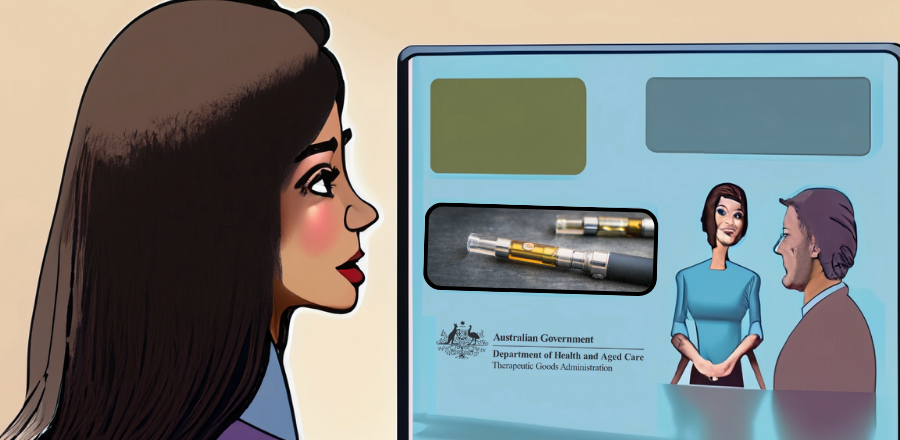Vapes for nicotine cessation: Who, What and How?
The AMA provides members with a summary of the recent TGA/RACGP webinar offering guidance for doctors on the prescribing of e-cigarettes for nicotine cessation.

We know prescribers are seeking simple guidance about vaping. To help with these common questions for prescribers, the TGA and RACGP hosted a webinar which will be posted on TGA’s Vaping Hub soon.
Below is a summary of the webinar for our members:
There is modest evidence to support prescribing a vape for people who want to quit but have failed to achieve smoking cessation with first-line therapy (a combination of behavioural support and TGA-approved pharmacotherapy). Quitline counsellors in each state and territory are well trained in providing behavioural support.
Vapes are unapproved goods, however doctors can prescribe lawfully via the Special Access Schemes (SAS) B or C or become an Authorised Prescriber (AP).
The SAS-B pathway is required when the person is under 16, acknowledging the issues with nicotine on young brains. Prescribers are required to fully inform their patients that they are requesting access to a product that has not been assessed for quality or safety and verbal consent must be obtained.
The list of vapes that comply with TGO 110 can be found here: List of notified vapes.
Not all prescribers are familiar with vapes and their accessories. Pods are favoured over liquids to minimise accidents. For someone who smokes frequently, a nicotine pod 35mg/mL/ day may be appropriate. Trial and error and review at 3-month intervals is recommended.
The device and the substance accessory need to be prescribed.
There are many vapers who have never smoked cigarettes requiring assistance to quit. There is no evidence-based advice available for this group. Additionally, this group tend to be under-age.
Behavioural support in combination with a TGA-approved NRT (off-label) is recommended as a principal of nicotine cessation therapy.



